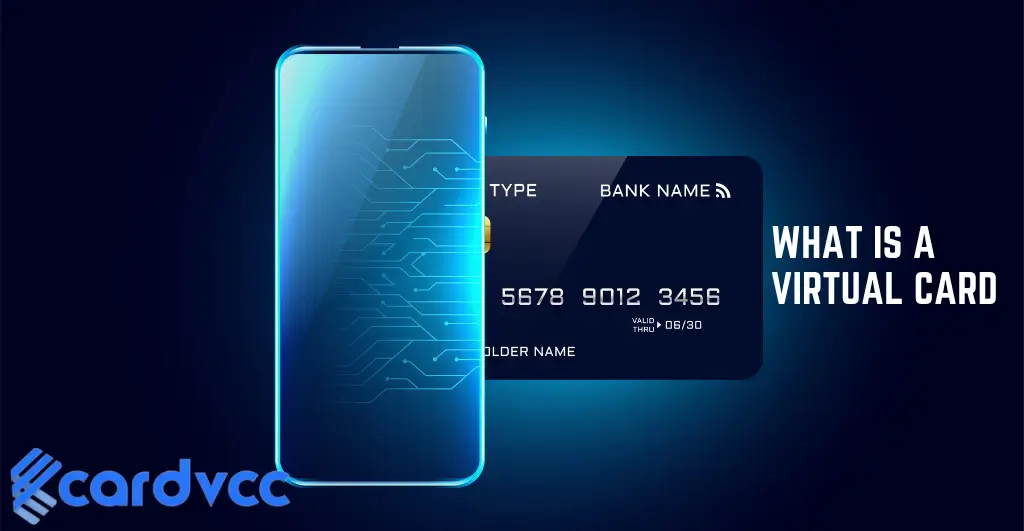A virtual card is a digital payment method that can be used for online transactions. It is a secure and convenient alternative to traditional plastic cards.

In today’s digital age, virtual cards have gained popularity due to their ease of use and enhanced security features. These cards are not physical and are issued for online purchases. Virtual cards are often used for one-time transactions or recurring payments, providing an added layer of protection against fraud.
They are typically linked to a specific account and can be easily managed through online banking portals or mobile apps. As virtual cards continue to evolve, they offer businesses and consumers a flexible and secure payment solution in the ever-expanding digital marketplace.
The Evolution Of Payment Methods
Payment methods have come a long way, transitioning from physical cash to digital wallets to virtual cards. Let’s explore this evolution in more detail.
From Cash To Digital Wallets
In the past, people relied mainly on cash for transactions. The introduction of digital wallets like PayPal and Apple Pay revolutionized how we make payments. These platforms offer convenience and security for users.
The Rise Of Virtual Cards
Virtual cards are the latest innovation in the payment industry. These are digital cards issued for online transactions, ensuring enhanced security and fraud protection. Virtual cards have gained popularity due to their convenience and versatility.
Exploring Virtual Cards
Virtual cards have revolutionized the way we handle online transactions and provide a convenient and secure payment method. In this section, we will delve into the world of virtual cards, exploring their definition, functionality, and the different types available.
Definition And Functionality
Virtual cards, as the name suggests, are digital payment cards that can be used for online purchases. Unlike traditional physical cards, virtual cards exist solely in electronic form, making them ideal for remote transactions. These cards are typically issued by financial institutions or payment service providers.
Functioning on the same principle as physical cards, virtual cards have a distinct card number, expiration date, and security code associated with them. However, instead of possessing a physical copy, these details are stored securely online or in mobile applications.
Virtual cards offer several advantages, particularly in terms of security. Since they are not tangible items, the risk of loss or theft is significantly reduced. Additionally, virtual cards can be generated for one-time use, providing an added layer of protection against fraud and unauthorized transactions.
Another benefit of virtual cards is their compatibility with a multitude of online platforms. Whether it’s e-commerce websites, subscription services, or even app stores, virtual cards can be used for a wide range of online purchases, enhancing convenience and eliminating the need for physical cards.
Types Of Virtual Cards
There are various types of virtual cards available to cater to different needs and preferences. Let’s take a closer look at some popular types:
- Disposable Virtual Cards: These cards are designed for one-time use and are particularly useful for online transactions that require enhanced security. Each transaction is allocated a unique card number, and once the payment is completed, the card becomes invalid.
- Reloadable Virtual Cards: As the name suggests, reloadable virtual cards can be topped up with funds, just like traditional prepaid cards. This type of card offers flexibility as it allows users to control their spending. It is an excellent option for budgeting and managing expenses.
- Virtual Gift Cards: Virtual gift cards are a digital alternative to traditional gift cards. They can be purchased online and are sent directly to the recipient via email or messaging services. Virtual gift cards offer a convenient gifting solution and allow the recipient to choose their preferred items from the respective online platform.
These are just a few examples of the types of virtual cards available. Depending on individual requirements and the issuing institution, there may be additional variations and features to explore.
Benefits Of Using Virtual Cards
Virtual cards are a secure and convenient way to make online payments without exposing personal or sensitive payment information. These cards are digital payment methods that provide a variety of benefits for both businesses and consumers.
Enhanced Security Features
One of the primary benefits of using virtual cards is the enhanced security they offer. These cards are often equipped with advanced security features such as single-use card numbers, spending limits, and card lock/unlock options, reducing the risk of fraud and unauthorized transactions.
Convenience And Flexibility
Virtual cards provide convenience and flexibility for making online purchases. Users can easily generate new card numbers for each transaction, eliminating the need to share personal account details with merchants. Additionally, virtual cards can be easily managed and tracked online, offering greater control over spending and budgeting.

Virtual Cards Vs. Traditional Credit Cards
Virtual cards and traditional credit cards are two different types of payment methods. Understanding the differences between them can help you make informed decisions about which is best for your needs.
Differences In Structure
Virtual cards are electronic cards that are created and managed online. They are typically linked to a specific transaction or merchant and have a limited lifespan. Traditional credit cards, on the other hand, are physical cards issued by financial institutions that can be used for various transactions within a credit limit.
Advantages And Disadvantages
Virtual cards offer enhanced security and fraud protection due to their restricted use and temporary nature. They also enable better control over spending as they can be set with specific limits and expiry dates. However, they may not be as widely accepted as traditional credit cards, especially in offline transactions. Traditional credit cards provide convenience and flexibility in usage, but they can pose a higher risk of overspending and are susceptible to physical loss or theft.
How To Get A Virtual Card
Virtual cards have become increasingly popular due to their convenience and security in online transactions. If you’re wondering how to get a virtual card, this section will guide you through the process and introduce you to some popular virtual card providers.
Issuing Process
The issuing process for a virtual card is quick and straightforward. Here’s a step-by-step guide:
- Research and choose a virtual card provider that suits your needs. Make sure to consider factors such as fees, security features, and customer reviews.
- Visit the virtual card provider’s website and sign up for an account. You’ll usually need to provide some personal information and create login credentials.
- Verify your identity by submitting the required documents. This can include a photo ID, proof of address, and sometimes even a selfie for facial recognition.
- Fund your virtual card. Depending on the provider, you can link it to your existing bank account or transfer funds from other sources.
- Once your virtual card is funded, you can start using it for online purchases. You’ll receive the card details, including the card number, CVV, and expiration date.
Popular Virtual Card Providers
Now that you know the issuing process, let’s explore some popular virtual card providers:
- PayPal – PayPal offers a virtual card called PayPal Prepaid Mastercard, which is linked to your PayPal account. It can be used for online and in-store purchases.
- Revolut – Revolut provides a virtual card as part of its digital banking services. It offers various features like real-time spending notifications and the ability to create disposable virtual cards.
- Privacy – Privacy is a virtual card provider that focuses on privacy and security. It allows you to create virtual cards with unique card numbers for each online merchant, reducing the risk of fraud.
- Cardvcc – platform streamlines the process of acquiring VCCs, prioritizing simplicity and security.
In conclusion, getting a virtual card involves choosing a provider, signing up for an account, verifying your identity, funding the card, and then using it for online transactions. Popular virtual card providers like PayPal, Revolut, and Privacy offer different features and levels of security.
Virtual Cards In E-commerce
Virtual cards offer enhanced security for online purchases by providing a unique set of account details for each transaction.
These temporary details are not linked to the user’s primary account, reducing the risk of fraud and unauthorized charges.
By utilizing a virtual card, shoppers can confidently make purchases without exposing sensitive financial information.
Virtual cards are ideal for managing recurring payments in e-commerce, such as subscription services.
Users can easily set spending limits and expiration dates on virtual cards, ensuring control over ongoing payments.
This feature helps customers avoid unexpected charges and simplifies the process of canceling subscriptions if needed.
The Future Of Virtual Cards
Want to know what a virtual card is? A virtual card is a secure digital payment method designed for online transactions. It eliminates the need for a physical card and provides enhanced security features, making it the future of digital payments.
Technological Advancements
Virtual cards are evolving rapidly due to technological enhancements. These advancements offer increased security and convenience. The utilization of biometric authentication is becoming more prevalent. It ensures secure transactions and minimizes the risk of fraud.
Integration With Emerging Payment Systems
Virtual cards are seamlessly integrated with various emerging payment systems. This integration enables users to make transactions across different platforms easily. Cryptocurrency and blockchain technologies are being incorporated into virtual card transactions.

Frequently Asked Questions Of What Is A Virtual Card
What Is A Virtual Card?
A virtual card is a digital payment method that allows for secure online transactions without using a physical card. It’s a unique card number for one-time or recurring use, protecting your actual card details.
How Does A Virtual Card Work?
Virtual cards work by generating a unique card number, CVV, and expiration date. This information is used for online transactions, providing an added layer of security and protecting your actual card details from potential fraud.
What Are The Benefits Of Using Virtual Cards?
Using virtual cards offers enhanced security, as they are separate from your physical card and can be easily managed for online transactions. Additionally, they provide greater control over spending limits and reduce the risk of unauthorized charges.
Are Virtual Cards Safe To Use?
Yes, virtual cards are safe to use for online transactions because they provide a layer of security by keeping your actual card details confidential. They are designed to protect against fraud and unauthorized use, offering peace of mind when making purchases online.
Conclusion
Virtual cards offer a secure and convenient way to make online transactions without revealing your personal information. With their unique card numbers and expiration dates, virtual cards provide an added layer of protection against fraud and identity theft. As they become more widely accepted, virtual cards are quickly becoming a popular option for individuals and businesses alike.
So, if you’re looking for a safer and more private way to shop online, consider using a virtual card for your next purchase.







